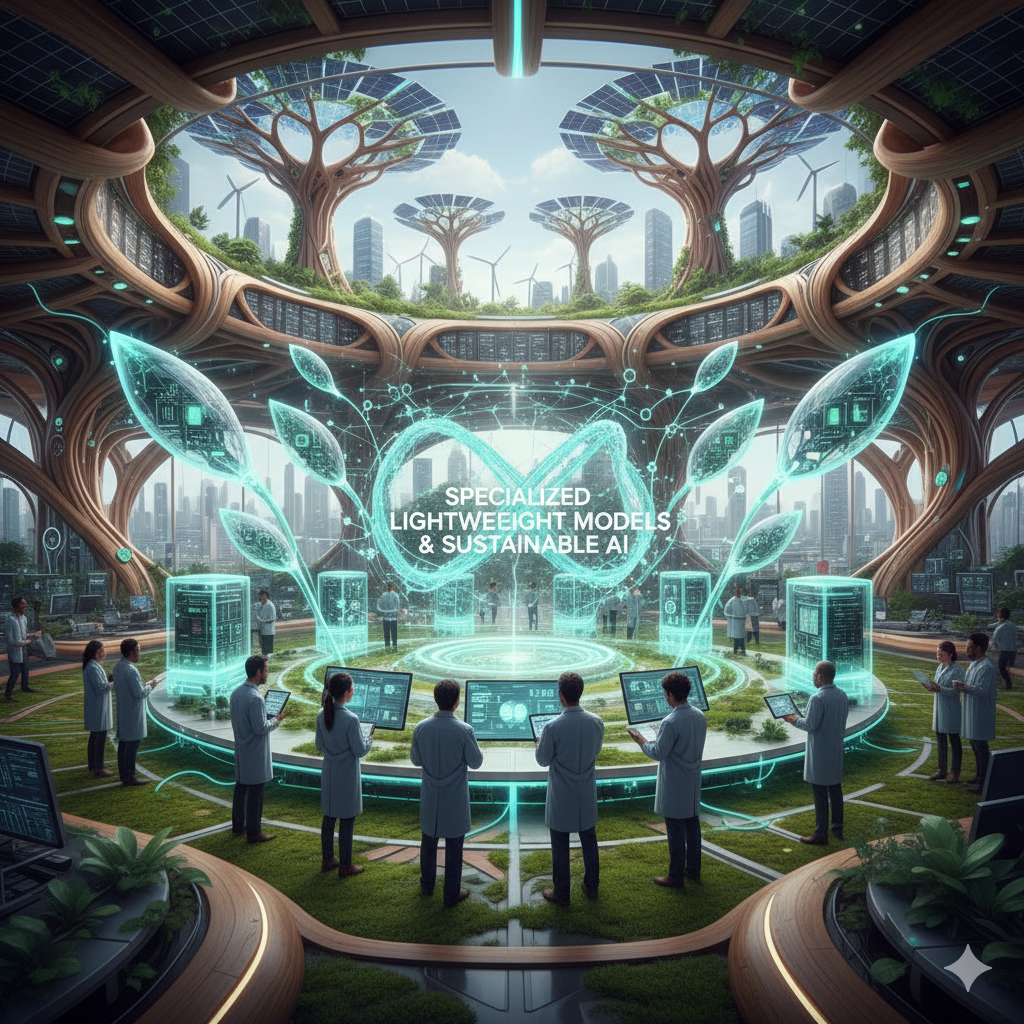🌍 Introduction: Making AI Smarter and Greener
Artificial Intelligence (AI) is the main driver behind the technological revolution that we witness today in the new era. It is embedded in our phones, cars, smart homes, and hospitals.
But to run these powerful AI systems, one requires huge computers, a lot of energy, and an enormous amount of data.
This leads to the problem of AI being expensive and not very friendly to the environment.
To fix that, experts are now developing power-efficient AI models that consume less energy and encourage the development of sustainable AI, i.e., AI that is kind to the earth and accessible to everyone.
⚙️ What Are Lightweight AI Models?
Lightweight AI models are essentially the same but differently sized models (smaller and lighter) of the standard AI models.
They operate on small devices such as mobile phones, cameras, or IoT sensors without the need for a powerful cloud server running the computations.
💡 Example:
When a phone authenticates you via your face or voice, it is not always the case that the phone sends the data to the cloud.
Instead, it relies on a small, efficient AI model that is already embedded in your device.
These models are built with techniques such as:
- Model Compression – which is the process of reducing the size of a model.
- Quantization – by which simpler numbers are used to speed up processing.
- Knowledge Distillation – where a smaller model is guided to imitate a larger model one.
- The consequence? AI that is capable of doing more in less time, and is cheaper and energy-saving.
🌱 What Is Sustainable AI?
Sustainable AI mainly stands for the creation and utilization of AI systems in ways that are environmentally friendly.
Building large AI models may require the same amount of electricity as hundreds of homes use!
Therefore, it is mostly companies and researchers that do the following to conserve energy:
- Cutting down energy consumption during AI training
- Employing renewable sources of energy for data centers
- Creating environmentally friendly software and hardware for AI
- The ultimate aim is simple — to create AI of great power without hurting the earth.
🔗 How Lightweight Models Help Build Sustainable AI
One of the main contributors to sustainable AI is the development of compact A.I. models Green
Due to their small size and high speed they can
- ✅ Consume a smaller amount of energy
- ✅ Operate on limited-energy gadgets such as mobile phones or sensors
- ✅ Limit the requirement for large data centers
- ✅ Support to a wider user base through these cheaper technologies
In effect, lightweight AI = less energy, less cost, and less pollution 🌱
💼 Real-Life Uses of Lightweight AI
Those are the areas where the potentials of lightweight and green AI have already been realized:
- Smartphones: Face recognition, voice assistants, and photo filters run on small AI models.
- IoT Devices: Smart thermostats and cameras use AI without cloud processing.
- Healthcare: Portable medical tools analyze patient data on the spot.
- Agriculture: Small AI sensors help farmers monitor crops and soil conditions.
- Factories: On-device AI systems detect machine issues early and save energy.
- Such examples demonstrate that small models can make a significant impact.
🚀 The Future of Sustainable AI
AI will not stop evolving in the future – it will become even more intelligent, efficient, and environmentally friendly.
Thanks to the recent studies, the performance vs energy consumption trade-off is gradually being resolved.
Very soon, we will witness the deployment of tailor-made lightweight AI models for different use cases across diverse sectors – from smart cities to electric vehicles.
Sustainable AI is not just another fashionable idea; rather, it is the major next step toward a cleaner and more efficient digital future.
🧠 Summary
Where usual AI models are hefty, slow, and inefficient, lightweight AI models are the opposite ones — smaller, faster, and more efficient.
Sustainable AI is focused on minimizing energy consumption and taking measures that help in environmental preservation.
When joined by hand, these two factors turn the tech world into one that is more environmentally friendly and accessible to everyone.
AI doesn’t just need to be smart. It also needs to be sustainable. 🌿
